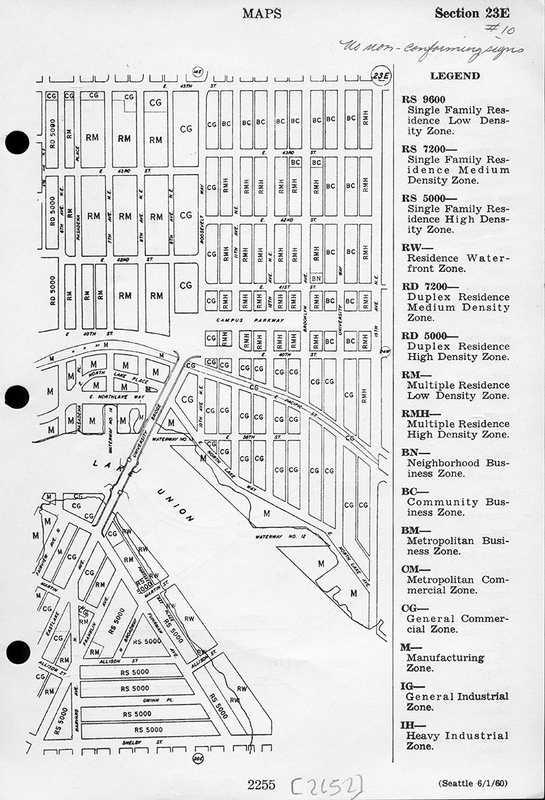Site Report 3

Seattle University District Zoning Map. 1960. Seattle Municipal Archives.

City of Seattle Analysis and Decision of the Director of the Department of Planning and Development at 3925 Adams Lane NE
Between Adams Ln. NE, Cowlitz Rd. NE, Brooklyn Ave NE, and NE Pacific St you find the Stevens Courts Apartment residing in the area. The development of my city block evolved much later than blocks directly adjacent to the University of Washington.
As mentioned in my previous Site Report on the Environmental History of the block, the land of the University District originally was inhabited by the Duwamish people prior to 1850. Reviewing topographical maps of that time reveal the slight grade in the area of my city block. At that time, the land was covered in forestry and streams. Soon after, the government took power of the land. Construction and clearing of land took place soon after. However, the most sudden changes to the area occurred when the Alaska-Yukon Expedition took place in 1909, it brought construction to the entire University District which brought a layout resembling the layout of the current University of Washington campus.
When referencing more sources from other decades, you can find in 1960 that this city block was a general commercial zone as shown in one of the primary documents attached to this site report. Most recently, the Stevens Courts apartments replaced the Mercer Hall housing as shown in the proposal from 2011. As seen among the primary documents on this site report, you will find the City of Seattle Analysis and Decision of the Director of the Department of Planning and Development source that documents this construction of the land on this city block in the University District. This reconstruction of the land affected the social and economic aspect of the land by allowing more students to reside in the area bringing equity to the land as well more social dynamics and diversity flowing into the area.
Audio recording: https://drive.google.com/file/d/0BxI2xbhKXeuQTEJwRXZveE5MMnM/view?usp=sharing
